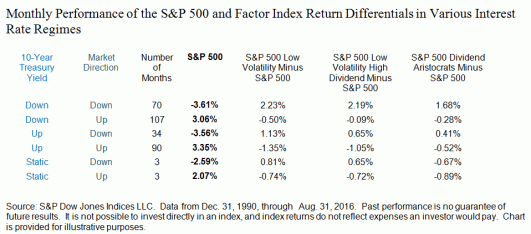How should an investor in a factor (or “smart beta”) index judge its performance? In this respect at least, smart beta is like any other strategy: you should evaluate it against the claims that its vendors made before you bought it.
This requires some subtlety. Smart beta methodologies pick stocks based on fundamental or technical characteristics, and performance claims are derived from the historical behavior of those characteristics. It’s the performance claims that gain or lose investor dollars. For example, we pick the constituents of our low volatility indices based on their historical volatility; the record demonstrates that such stocks provide investors with protection in falling markets and participation in rising markets. But investors buy low vol primarily because they like the idea of protection and participation, not because they care about how we get there.
That said, how often does low vol “fail?” If we look strictly at the index’s fundamental characteristics, the answer is “hardly ever.” Using daily data and a three-month lookback horizon, the S&P 500 Low Volatility Index is less volatile than the S&P 500 97% of the time; if we lengthen the time horizon to a year or more, Low Vol’s success rate is 100%. So Low Vol is virtually always less volatile than its parent index. These data, of course, ignore investment performance.
In performance terms, low volatility strategies can fail in two ways: by underperforming falling markets (a failure of protection), and by falling when the market goes up (a failure of participation). Underperforming a rising market is not a failure – low vol strategies were never intended to outperform in all environments. Here the record is still very strong. The S&P 500 Low Volatility Index rises in 86% of the months when the S&P 500 rises. In 83% of the months when the S&P 500 falls, Low Vol falls by less. There have never been more than two consecutive monthly failures (and that rarely), which may be a function of the index’s quarterly rebalancing schedule.
The financial press has recently featured a surfeit of suggestions that defensive strategies will soon underperform. They’ve all benefited, some more than others, from income-seeking bond refugees, which leads some observers to argue that when interest rates finally begin to rise, defensive equities will suffer as their advantage over bonds diminishes. It’s a plausible argument, but it’s also a hypothetical, which means that no one can confirm or deny it definitively. What we can say is that the historical record of defensive indices in rising rate environments is strong — and that periods when defensive indices fail have been rare and short.
The posts on this blog are opinions, not advice. Please read our Disclaimers.












